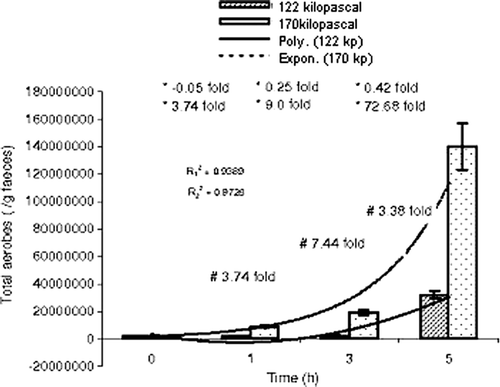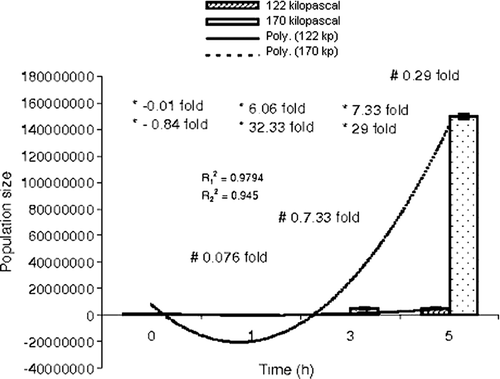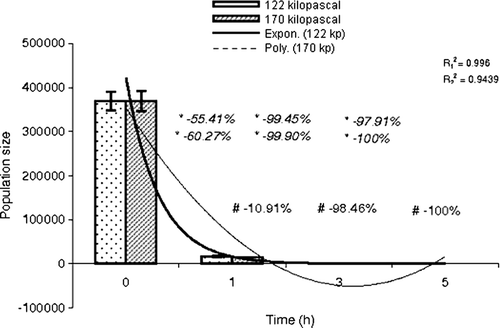Figures & data
Table I. Quantification of gastrointestinal flora after hyperbaric treatment for various time periods.
Figure 1. Comparative study of population size of total aerobes with time at 122 and 170 kPa. , regression coefficient (122 kPa-time);
, regression coefficient (170 kPa-time); *step-wise; –, reduction in population size; +, increase in population size; #, time-specific, ⊺, standard error of mean.

Figure 2. Comparative study of population size of E. coli with time at 122 and 170 kPa. , regression coefficient (122 kPa-time);
, regression coefficient (170 kPa-time); *step-wise; –, reduction in population size; +, increase in population size; #, time-specific; ⊺, standard error of mean.

Figure 3. Comparative study of population size of total anaerobes with time at 122 and 170 kPa. , regression coefficient (122 kPa-time);
, regression coefficient (170 kPa-time); *step-wise; –, reduction in population size; +, increase in population size; #, time-specific; ⊺, standard error of mean.

Figure 4. Comparative study of population size of Bifidobacterium spp. with time at 122 and 170 kPa. , regression coefficient (122 kPa-time);
, regression coefficient (170 kPa-time); *step-wise; –, reduction in population size; +, increase in population size; #, time-specific; ⊺, standard error of mean.

Figure 5. Comparative study of population size of Clostridium perfringens with time at 122 and 170 kPa. , regression coefficient (122 kPa-time);
, regression coefficient (170 kPa-time); *step-wise; –, reduction in population size; +, increase in population size; #, time-specific; ⊺, standard error of mean.

